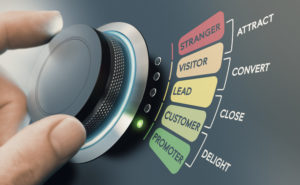Demographics vs Psychographics
Demographics is the collection of statistical data (such as age, gender, and income) for a certain population. Information on a population’s views, goals, and other psychological characteristics is referred to as psychographics. Your buyer’s habits, interests, spending patterns, and values might all be considered psychographic information. Take a look at the demographic and psychographic profile example below.
Demographic Profile:
- 50-70 years old
- Lives in the suburbs
- Household income of $200K or more
- married, with children.
Psychographic Profile:
- Concerned about one’s appearance
- Lacks the time to work out
- Likes to buy things seen on TV
- Loves spending time with family
Demographics describe “who” your customer is, whereas psychographics refers to “why” they buy. Both the “who” and “why” of your customers can drive purchasing decisions, so it’s important to focus on both aspects of your marketing strategy.
How To Use Psychographics For Your Benefit
Examining psychographics is beneficial to any marketing strategy. For example, you might learn that your audience prefers using Facebook and is interested in fitness videos/posts on Facebook. Using this information, you may spend more money on advertisements on the networks your customers enjoy using regularly (Facebook) or create content that is focused on fitness.
The widely-known problem with psychographics is that it has been perceived as more difficult to gather than demographic data. However, the internet has made collecting your audience’s psychographic data more actionable and accessible. With this newfound ease into psychographics, it can really help narrow your efforts, create a better targeting strategy for you, and generate leads/prospective customers.
Creating a profile, or persona, to use in combination with demographic and psychographic information is essential. You should know your audience’s demographics such as general age, income level, and geographical region, as these factors make it simpler to target clients on a more detailed level. But psychographics, on the other hand, may assist you with message, persuasion, and creativity on a multitude of channels.
Advantages of Psychographic Segmentation
Marketing in 2021 requires a human aspect to your brand. Psychographics can help turn your focus away from your product or service’s advantages and features and onto your customer’s life and how you might enhance it. Psychographics may also provide insights into how and why your consumers utilize your product or service. You’ll gain a better understanding of your customers’ wants, needs, worries, motivations, and goals and how you can customize products/services for your intended customer.
The 5 psychographic segmentation variables
1. Personality Psychographics
Customers’ personalities and purchasing patterns are inextricably linked. Determining which products/services would be more appropriate for their target market is critical in developing marketing strategies effectively.
2. Lifestyle
A brand can provide products or services that cater to various lifestyles. The proper version of that product may be targeted to the right audience by studying consumers’ habits. Thus, if segmentation is done on the basis of lifestyle, product resources may be saved, and product development can continue with the majority lifestyle.
3. Social Status
People’s socioeconomic standing determines the items they consume and their preferences in the majority of situations. This has an impact on the type of product, pricing, and specialized markets. Every social class has its own favored and affordable clothing, grocery shop, automobile, etc.
4. AIO (Activities, Interests, and Opinions)
This is based on the consumers’ preferences for certain activities, topics in which they are passionately engaged, and their views on certain issues. This variable focuses on enthusiasts and hobbyists, as well as sports, political interests, and anything someone finds an affinity towards.
5. Attitudes
Our perspectives are shaped by our own individual experiences and environments. Each potential consumer will have a unique attitude and customers are divided into groups based on their beliefs and attitudes. Attitude is an intangible characteristic that reveals a customer’s fundamental personality and because they are intangible, marketing teams must use their creativity when selecting who to target with a product.
If you liked this Symboliq blog, check out these other related articles:
–how to target + retain repeat customers
–you know it’s time for a website content refresh when…






